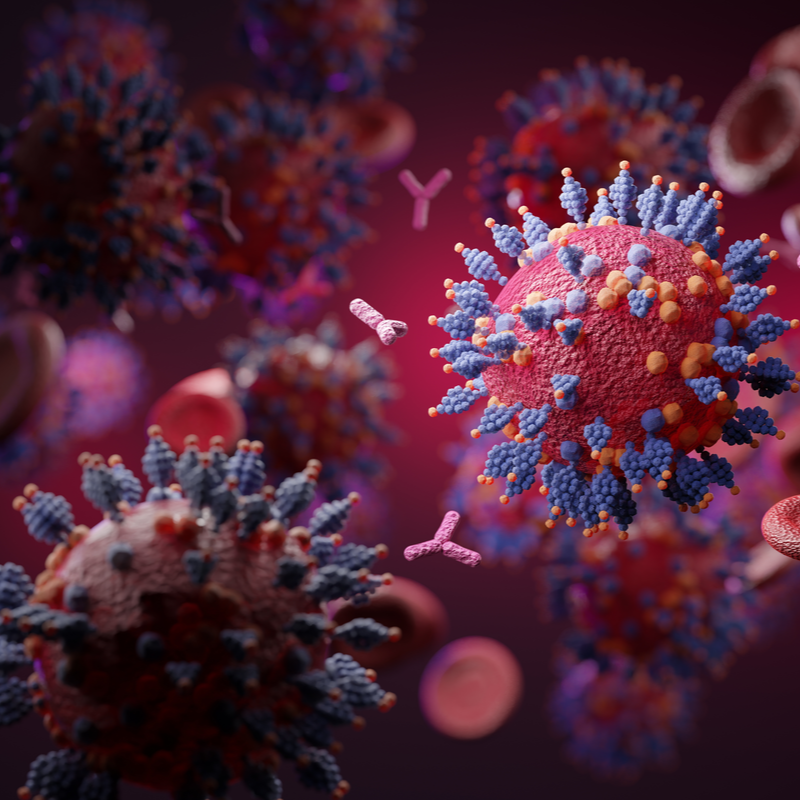
What is Sars 1?
Sars 1 is also known as Sars-CoV 1 and is a virus that belongs to the Coronaviridae family. The virus caused a worldwide pandemic in 2002/2003, which claimed over 774 lives in one year. Infection with Sars 1 can lead to a severe acute respiratory syndrome.
It is assumed that the Sars virus comes from the reservoir of animals. This means that animals originally carried the virus. In the animals these viruses then eventually multiplied. In addition, it is assumed that mainly Asian bats were the host of the Sars virus . Ultimately, the virus was then transmitted to humans via other animals such as cats . This is why the term zoonosis will always come up when talking about Sars virus 1. A zoonosis refers to diseases that pass from animals to humans and vice versa.
When did Sars 1 first appear?
Sars 1 was first reported in November 2002. When it first appeared it was only in areas in Southeast Asia. But within just six months, Sars 1 had spread all over the world. Thus the first Sars-CoV pandemic occurred, causing respiratory syndromes. About 8,000 people became infected with the virus and 774 died from the consequences of the disease. Sars 1 mainly affected adults . Until the outbreak of this pandemic, Sars viruses, which belong to the coronaviruses, were mainly known as the cause of harmless colds. Incidentally, Sars 1 viruses originated in research laboratories. The virus was experimented with and researched there. Since 2003, however, only a few cases of Sars 1 are known.
Who is particularly at risk for Sars 1?
An infection with Sars 1 is possible in anyone who comes into contact with the viruses. However, corresponding observations, show that certain groups of people are particularly at risk. In the years 2002 and 2003, there was a worldwide pandemic, yet it turned out that children only very rarely contracted Sars 1. Fewer women died than men, especially if they already suffered from chronic diseases. If pregnant women were infected with the virus , this often led to the death of the unborn child in the first months of pregnancy. On the other hand, the mortality of the mother increased as the pregnancy progressed.
What are the symptoms of SARS 1?
The incubation period of Sars 1 is about two to seven days. In the first few days after infection, Sars 1 usually manifests itself as follows :
- Rapidly increasing fever,
- Muscle aches,
- Headache,
- General feeling of illness.
After
a few days, the illness phase develops for which Sars 1
is known. The respiratory organs are affected. In this phase,
patients suffer from:
- Dry cough,
- severe shortness of breath,
- Lack of oxygen in the blood and organs.
About
70 percent of those affected also suffer from a thin
diarrhoea, which can already occur in the first weeks of the disease
.
The Sars virus can damage the lungs so severely that a necessary gas exchange is no longer guaranteed. This leads to lung failure. If a patient does not receive intensive medical care and treatment immediately, he will die. However, there are far less dramatic cases of SARS with only mild symptoms. Completely asymptomatic courses have also been reported
How is Sars 1 diagnosed?
In order to diagnose Sars 1, a doctor will first take a medical history and then perform a physical examination. Here the focus is on taking the temperature and listening to the lungs. In addition, an X-ray of the chest can provide further information about Sars 1 . This is because there are already changes in the lungs in the first few days. To be absolutely sure and to be able to exclude other diseases , a blood test is ordered. For this , the blood of a patient is taken under extremely high safety measures and examined in the laboratory for genetic material. Alternatively, can also be used to look for antibodies in the blood. If the suspicion of a Sars 1 infection is confirmed, the head of the laboratory must report this to the health department. This is to prevent the spread and further pandemic of the virus.
How is Sars 1 treated?
There is no causal treatment for the Sars virus. This means that there are no drugs available to render the virus harmless. Therefore the therapy is purely symptomatic. Only the symptoms such as pain or fever are treated without fighting the cause, i.e. the virus.
Paracetamol or ibuprofen can be taken as painkillers and fever reducers. To alleviate the shortness of breath, oxygen is often given via an oxygen mask . Infusions are used to maintain water balance, especially in very severe diarrhoea . Interferon alpha can be taken as a helpful medicine. This contains proteins that the body also produces itself and supports the immune system in its fight against the viruses.
However, the essential goal of treatment is to prevent the disease from spreading and causing a pandemic. It is therefore essential that Sars 1 patients isolate themselves . In addition, special care must be taken to ensure that medical staff only approach a patient wearing protective equipment, such as a protective gown and a face mask. After each contact, the hands must be carefully washed and disinfected.
What is the prognosis for Sars 1?
About 10 per cent of patients die from Sars 1. However, many of those affected only have a mild course of the disease, which often even occurs without symptoms. In some cases, long-term consequences have been observed. These include the severe fatigue symptom complex.
